Industry Alliances and Organizations Multiple industry groups are working on 5G deployments and standards. These groups include: O-RAN Alliance: A group of telecom companies focused on fostering wireless networks that are open software-defined and virtualized, enabling architects to mix and match products from different In 2018, the xRAN and C-RAN organizations merged to form O-RAN. […]

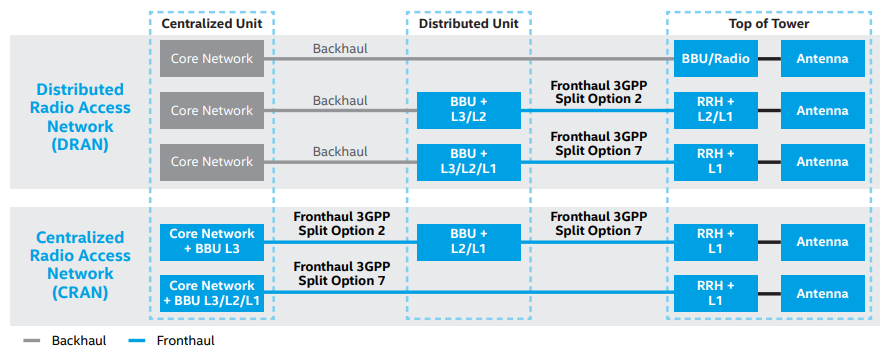
Functional Split Options for 5G Networks As network architects work to meet the 5G challenges of increased traffic and data flows, a fundamental question is how much intelligence to put near the antenna versus at the DUs or CUs. Mobile Network Operators (MNOs) as well as industry-standards groups, such as the 3GPP, IEEE, Telecom Infra […]
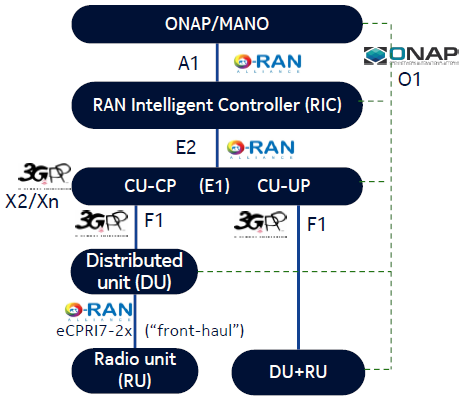
The main motive for the RAN Intelligent Controller (RIC) is to bring software-defined controllability to RAN to increase system performance as on the path towards 5G, with network densification, and availability of different types of spectrum bands, it is increasingly a more difficult task to optimally allocate radio resources, implement handovers, manage interference, balance load […]

The O-RAN Alliance is the main driver of the OpenRAN concept, especially the efforts to standardize interfaces, in addition to the TIP. Founded in 2018 by AT&T, China Mobile, Deutsche Telekom, NTT DOCOMO, and Orange. The O-RAN Alliance’s goal is to foster the development of reference designs and standards such that current and future RANs […]
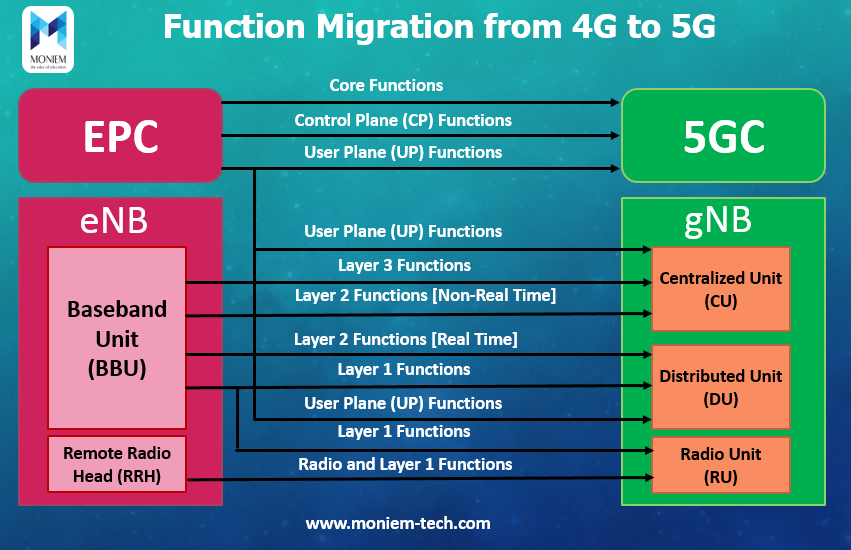
5G shouldn’t be seen simply as the next generation of mobile communications. It’s a smart ecosystem that’s ready to catch new innovations and highly customized services. 4G to 5G Interworking 4G LTE and the 5G networks will continue to interwork for a number of years. This is why it’s essential to: Support a seamless handover […]
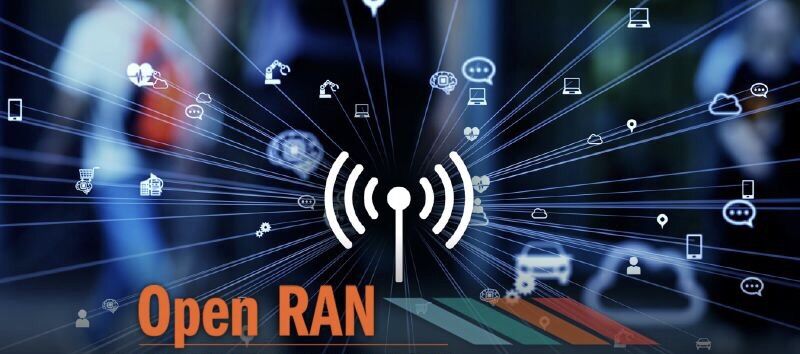
Why do MNOs struggle to shift to Open RAN? I know many MNOs are struggling to shift their RAN strategy to OpenRAN in their 5G Roadmap due to many reasons like they can not get away from their monolithic supply chain from the big vendors. Also, there’re some interfaces that are still NOT open even if these […]
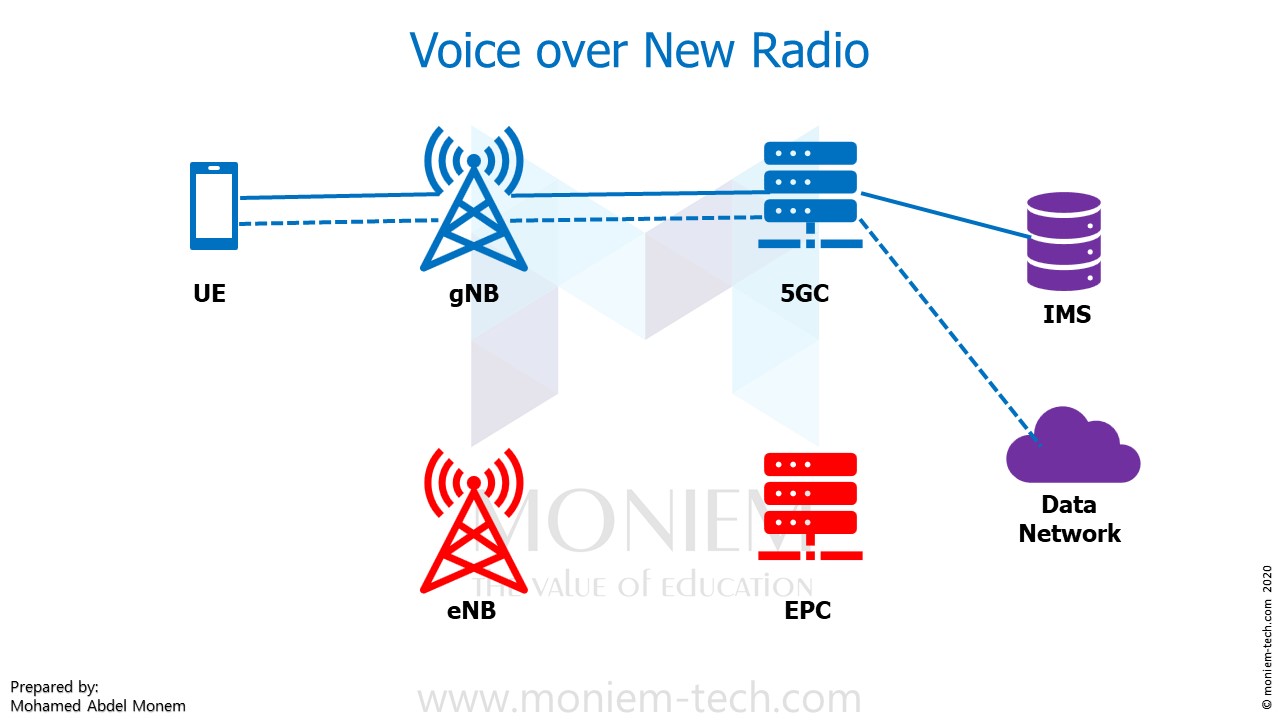
VoNR is IMS based voice services that use 5G as the access network (as opposed to LTE and VoLTE) Introduction Voice over New Radio (VoNR) is the IP Multimedia System (IMS) based voice calling services that use the 5G network for its source of Internet Protocol (IP) voice processing. The New Radio network communication is […]
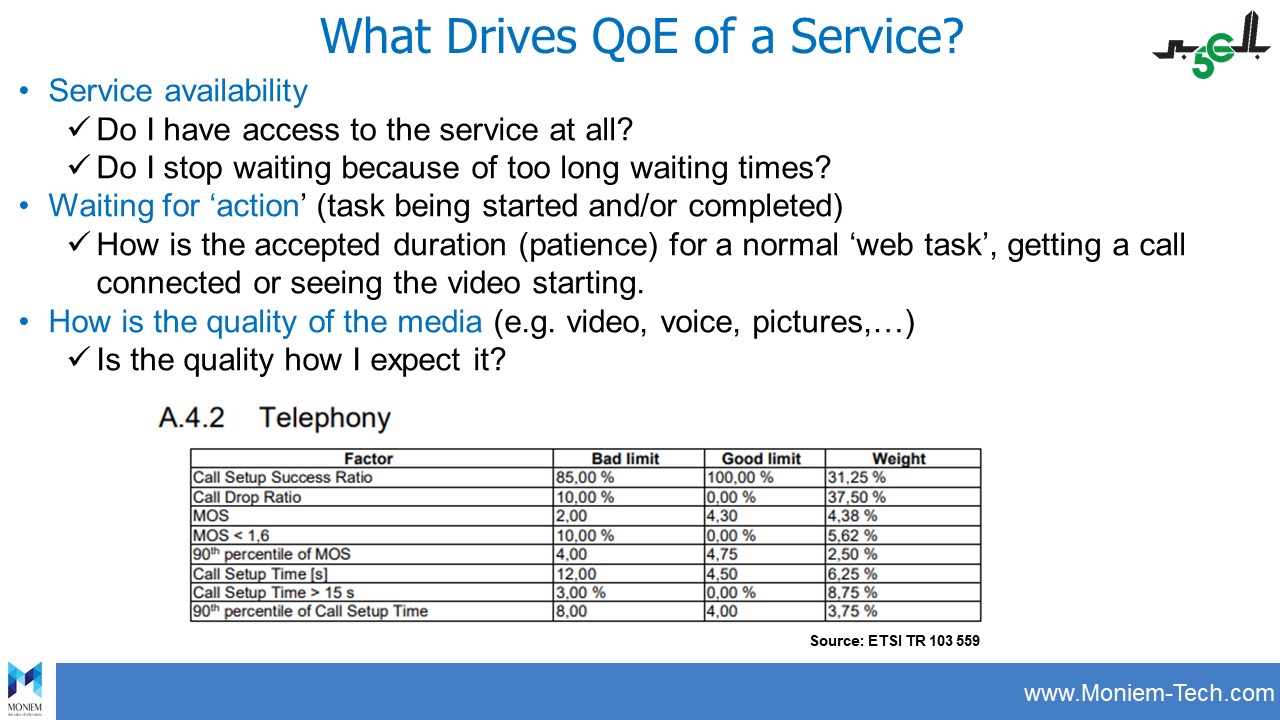
The accurate benchmarking and scoring of networks that cover large geographic areas requires careful consideration of a number of factors. These include the technology used, the extent of coverage offered, mobile device evolution, customer population distribution, network usage, and tariff offerings. Best QoE [Quailty of Experience] in daily life for a customer guarantees satisfaction and […]
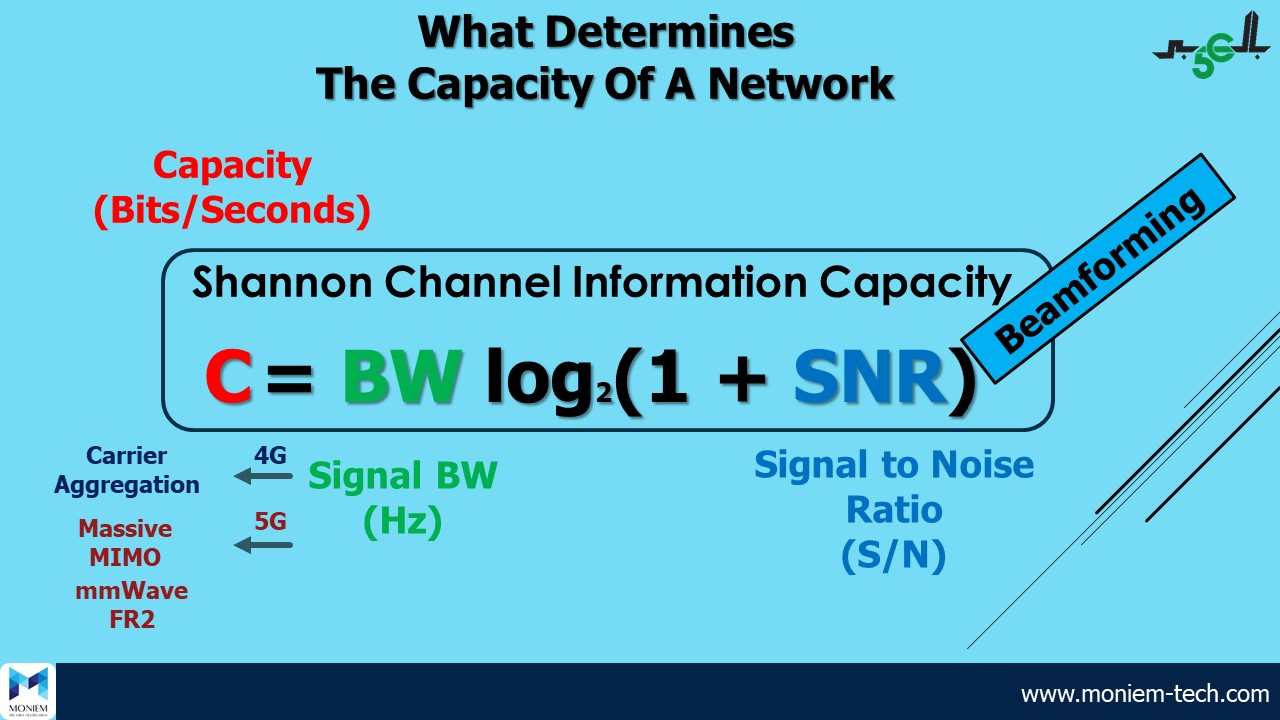
In the early 1900’s two researchers working independently derived a relatively simple equation that serves as a Moore’s Law for the wireless industry: the Shannon- Hartley theorem. This theorem gives an upper bound to the amount of information that can be transmitted over the wireless channel where the individual channel capacity is dependent on only […]
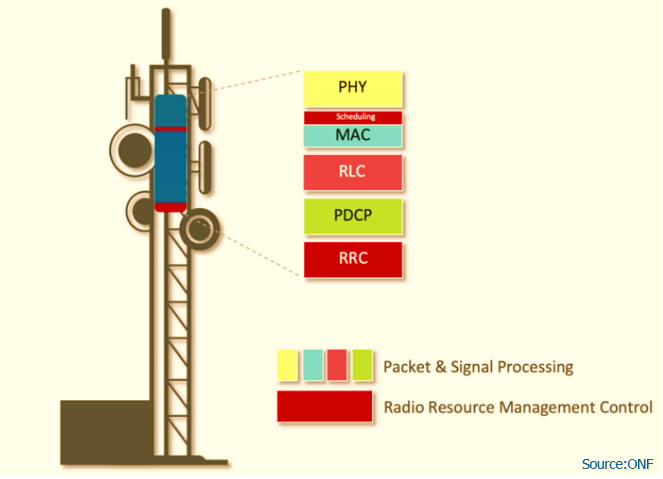
In the cellular network, RAN provides wide-area wireless connectivity to mobile devices. Towards this end, it conducts two fundamental tasks: It converts IP packets to Physical Layer packets suitable for transmission over the time-varying mobile channel using packet and signal processing techniques. It conducts Radio Resource Management (RRM) control to determine how best to use […]

Some friends asked me, Should we have a 5G good data rate when seeing 5G Icon on our phone? Mmmm… My answer should be Yes, However it’s the not right answer as there’re many technical items we need to discuss first before answering this question. Let’s remember this famous incident/debate from US company AT&T when […]
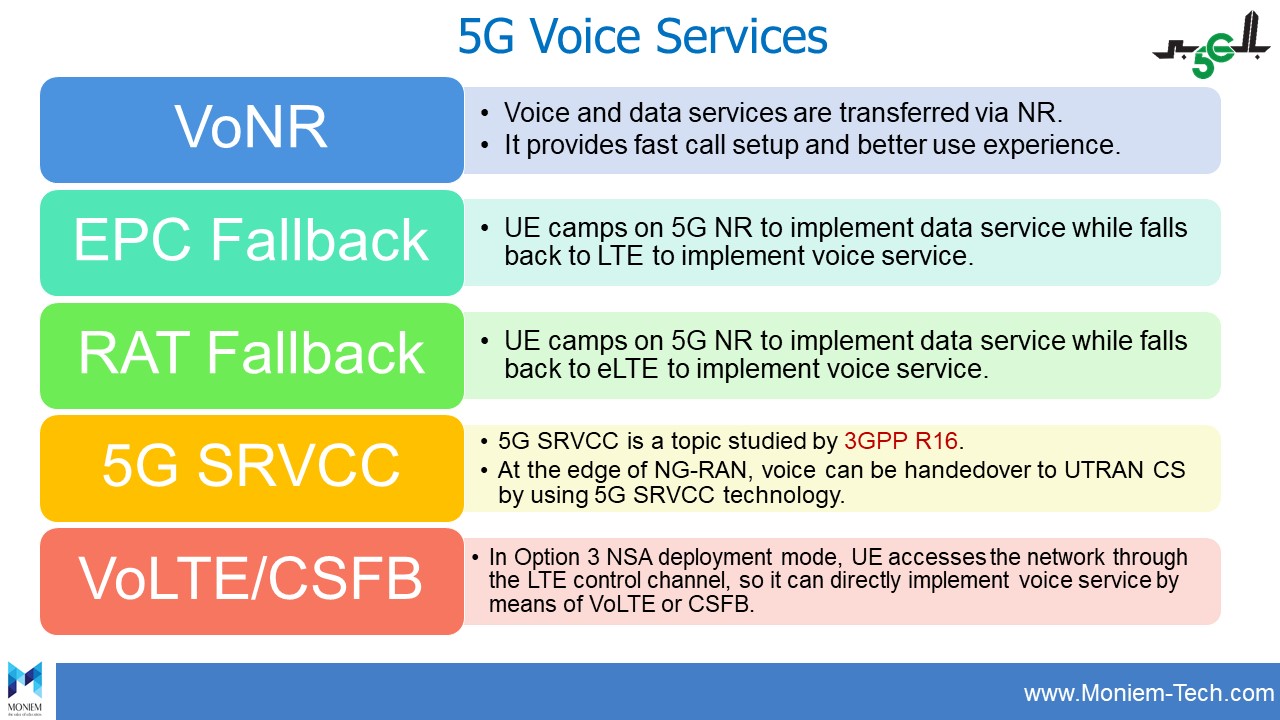
In June 2018, as 3GPP announced that the standalone (SA) standards have been frozen, the standardization of 5G Core (5GC) is complete. 5G network commercialization has begun and the world-wide mainstream operators are dedicated to 5G network construction. According to 5G deployment options, 5G voice solutions not only include the target solution Voice over New […]
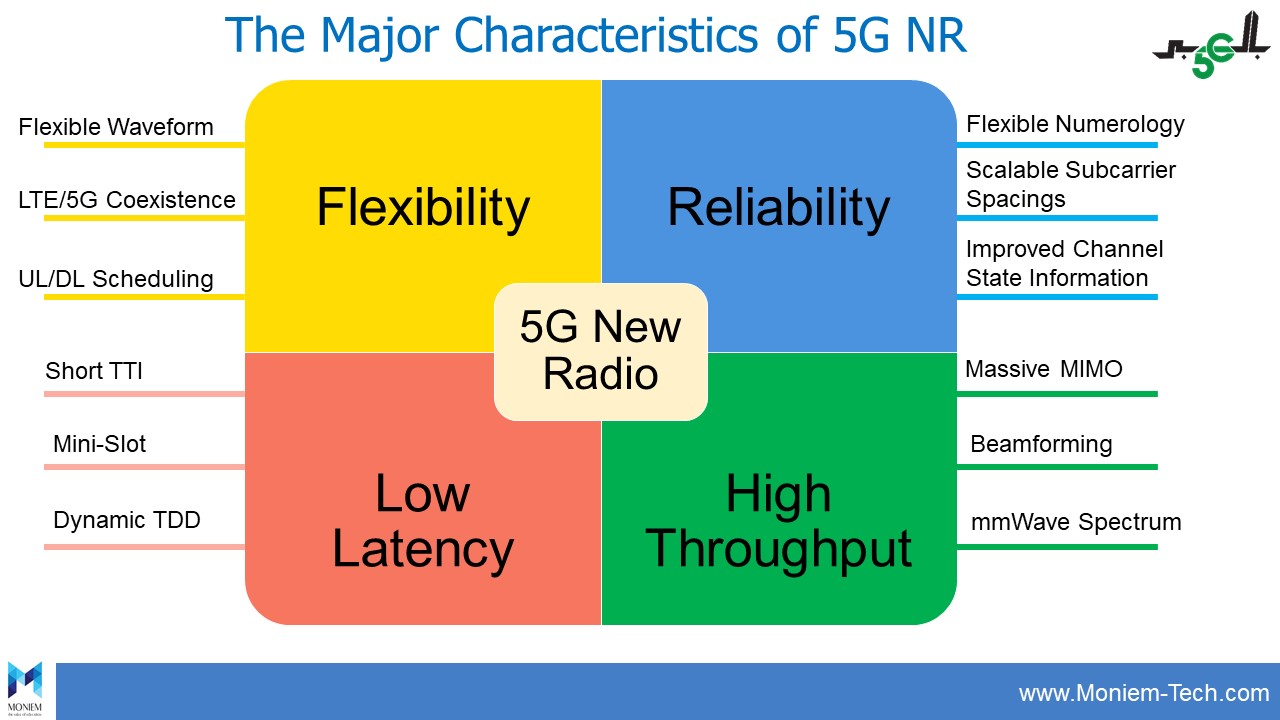
5G New Radio (NR) 3GPP is defining 5G NR in Release 15, with an initial release for a non-standalone operation scheduled for March 2018 and a full release for a standalone version scheduled for September 2018. 5G New Radio Release 15 Focus: 5G NR Release 15 features: Ability to operate in any frequency band, […]
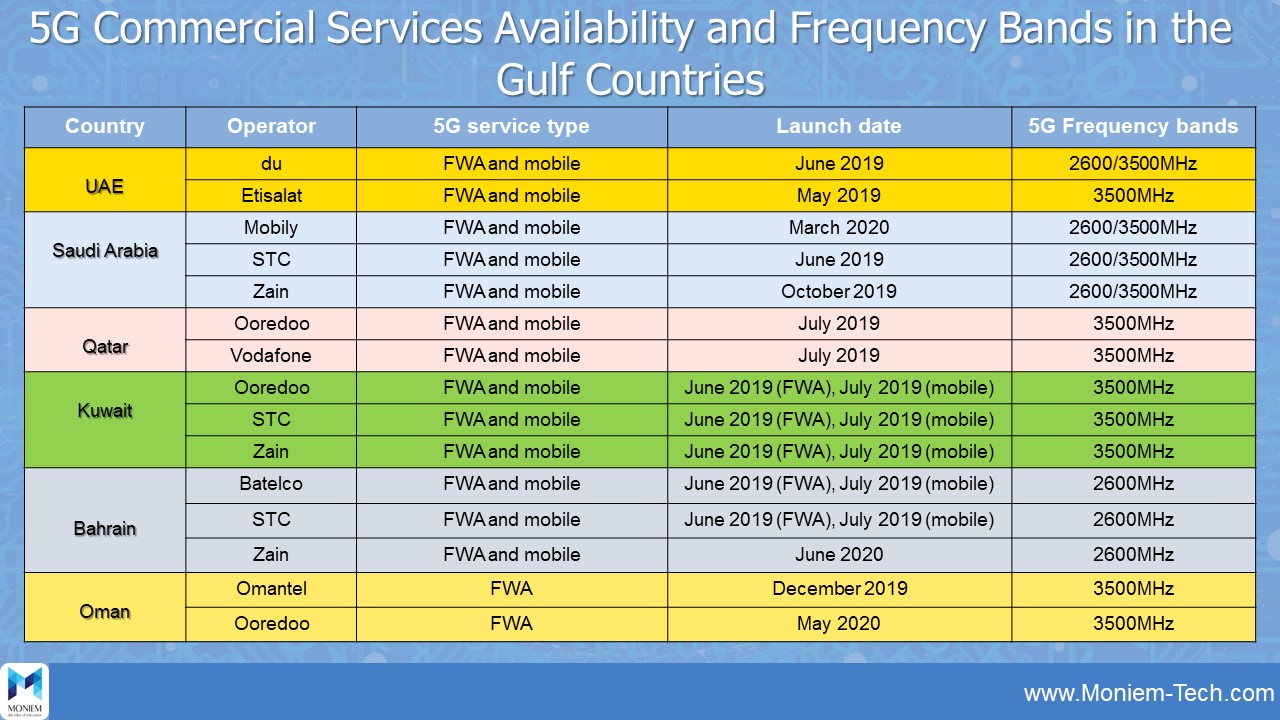
The Gulf Countries (UAE, Saudi Arabia, Qatar, Kuwait, Bahrain, and Oman) are the front runner in the 5G Race. They started to think of 5G as early as Mid-2019. Use Cases: The main initial two uses cases are eMBB (Mobile) and FWA (Fixed Wireless Access). 5G Spectrum Band: The 5G Spectrum Auction is in two […]

The core of mobility management in 5G NR is very similar to the one in 4G LTE. As specified by 3GPP Rel. 15, mobility in mobile networks is divided into RRC_IDLE mobility, RRC_INACTIVE mobility, and RRC_CONNECTED mobility. RRC_IDLE and RRC_INACTIVE state in which UE does not have any established RRC connection. RRC_CONNECTED means that UE […]
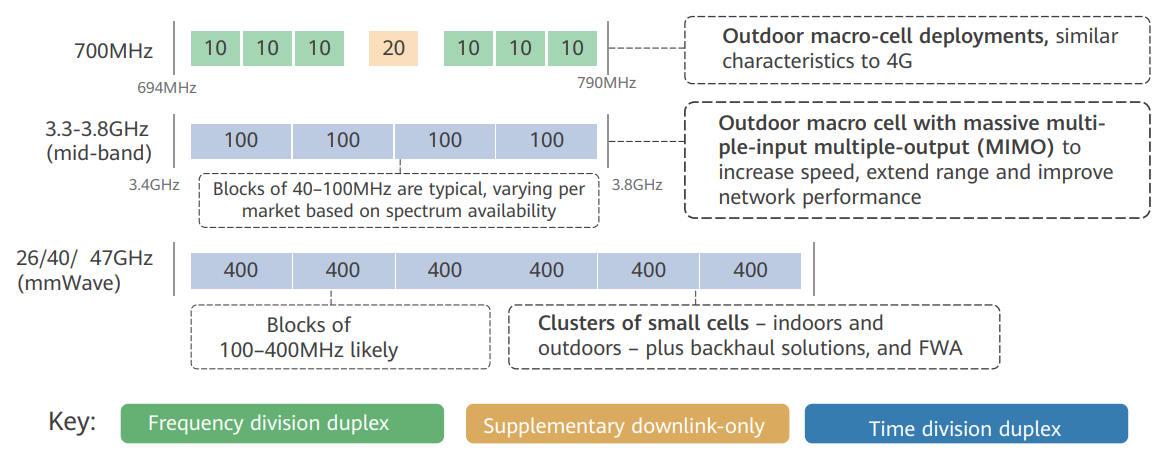
The ITU-R IMT-2020 (5G) Vision includes three usage scenarios: eMBB, mMTC, and uRLLC. It also specifies the key capabilities of IMT-2020 which represent great improvements in comparison with the previous generation of IMT systems. To address diversified requirements from the envisioned usage scenarios in different phases of 5G, 5G needs access to “high”, “mid” and […]
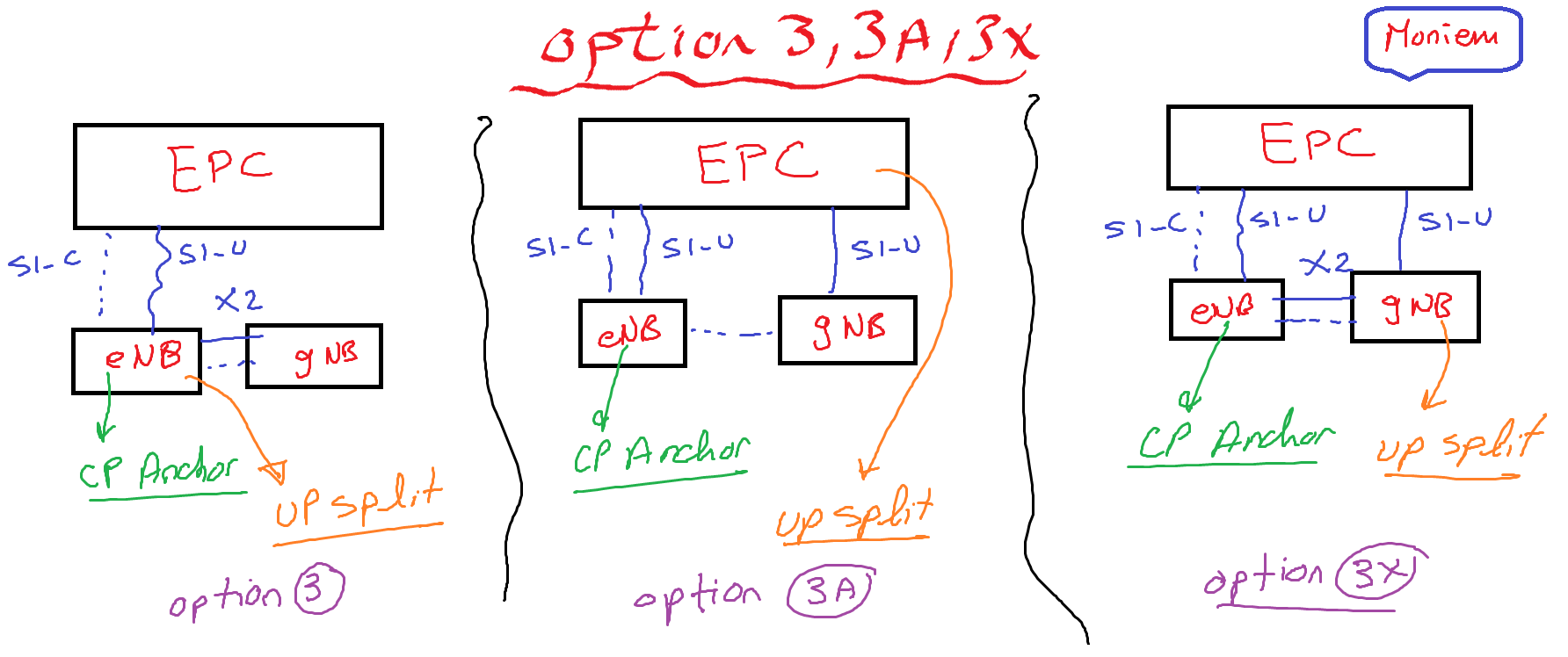
When you are reading 3GPP TS 37.340 for 5G NR Release 15, you’ll find on Page 7, section 4 the definition of “Multi-RAT Dual Connectivity” or MR-DC and the definition is not new as it’s already mentioned before on 3GPP Release 14 TS 36.300. The main idea of Dual Connectivity or DC, in general, is […]
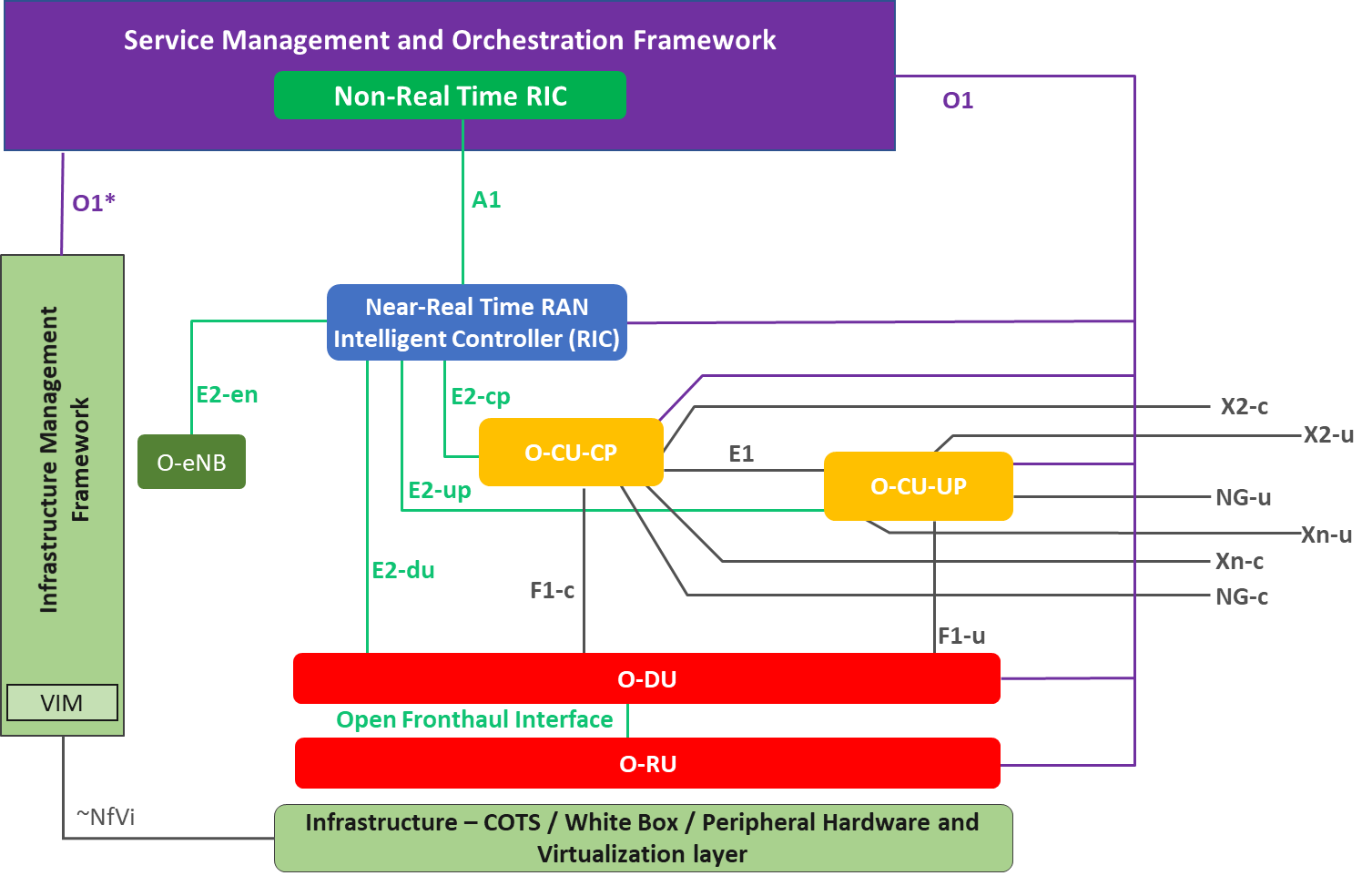
O-RAN SC architecture follows O-RAN Alliance defined architecture. In the O-RAN architecture, the radio side includes Near-RT RIC, O-CU-CP, O-CU-UP, O-DU, and O-RU. The management side includes Service Management and Orchestration Framework that contains a Non-RT-RIC function. Components Definition near-RT RIC: O-RAN near-real-time RAN Intelligent Controller: a logical function that enables near-real-time control and optimization […]
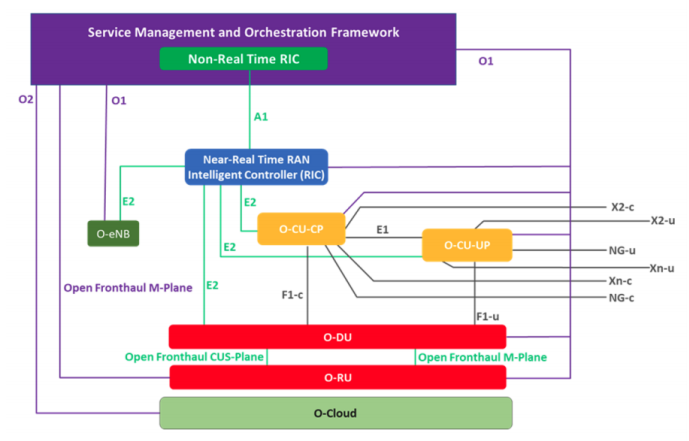
The “Cherry” Release of O-RAN Open Software • Cherry features significant advancements in the end-to-end integration of O-RAN Architecture components. • The software now contains new functions aligned with the latest O-RAN specifications, such as the E2, A1 or O1 interfaces. In December 2020, the O-RAN Software Community (OSC), working with the Linux Foundation, published […]
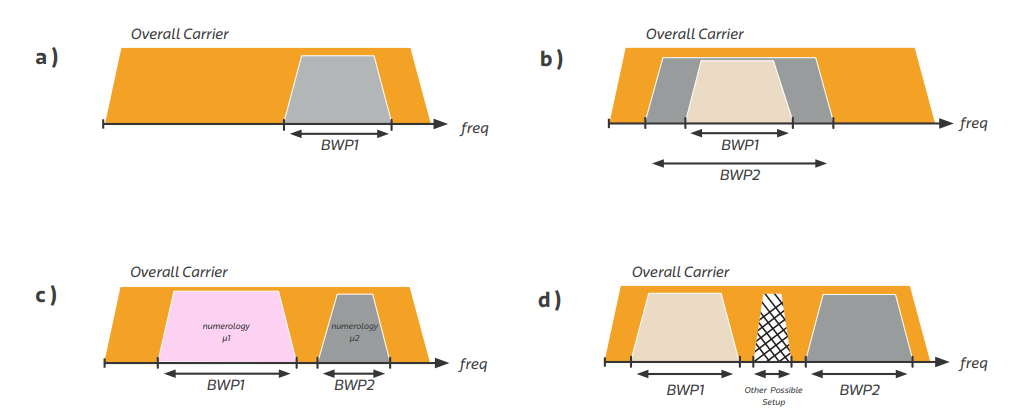
Bandwidth Parts & Bandwidth Adaptation Basic Concepts As per the definition in TS38.300, with Bandwidth Adaptation (BA), the receive and transmit bandwidth of a UE need not be as large as the bandwidth of the cell and can be adjusted: the width can be ordered to change, e.g. to shrink during the period of low […]

The last 12 months have seen an unprecedented amount of disruption in the Telecom industry, fueled in large part by the coronavirus pandemic. Let’s take a look back at the most important articles and posts I wrote in 2020. Open RAN What is the difference between 4G C-RAN and 5G C-RAN? What is the difference […]
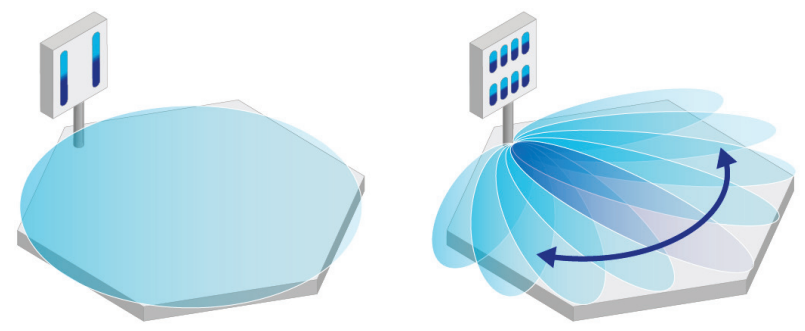
5G new radio (NR) is conceived to provide new service types, namely, enhanced mobile broadband (eMBB), ultra-reliable and low latency communications (URLLC), and massive machine-type communications (mMTC). Among these, eMBB is expected to provide exceptionally fast data speeds to facilitate services that have high throughput requirements such as high definition (HD) video streaming, virtual reality […]

RAN slicing builds on existing 5G network investments to facilitate the creation of next-level services for enterprises and mobile broadband (MBB) end-users while guaranteeing the fulfillment of service level agreements (SLA). What is 5G RAN slicing? In the era of 5G, efficient solutions are needed to address simultaneously services that need high bandwidth and services […]
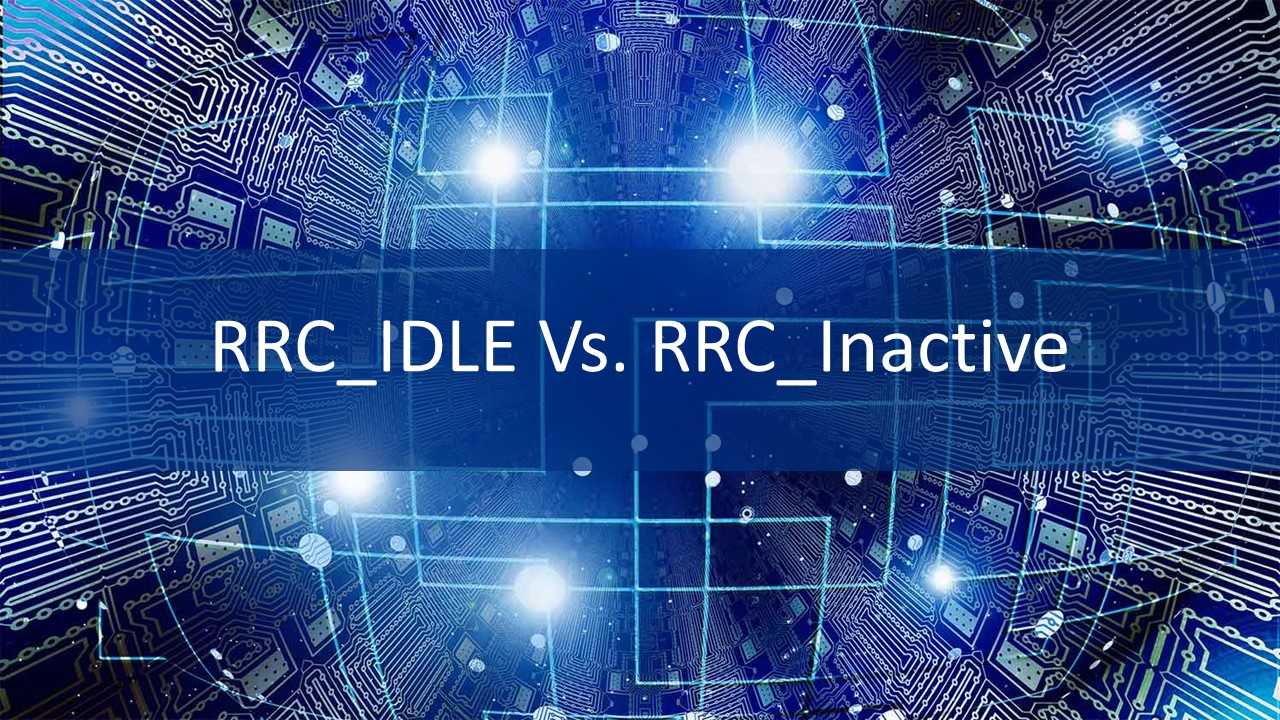
RRC_IDLE The UE is in the idle state when there is no RRC connection established. In RRC_IDLE: A UE specific DRX cycle may be configured by upper layers. UE monitors a paging channel for core network paging using 5G-S-TMSI or IMSI. UE performs neighbor cell measurements and cell reselection. UE acquires system information (SI). RRC_INACTIVE […]
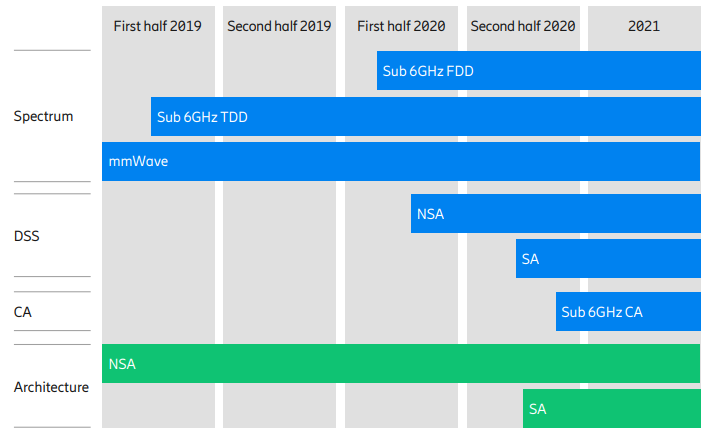
Ericsson Mobility Report provides industry-leading projections and analyses of the latest trends in the mobile industry, including subscription, mobile data traffic, and population coverage. Our forecasts are based on past and current data, validated with extensive network measurements. Read the report to learn about the latest figures for 5G, IoT, fixed wireless access, and more. […]
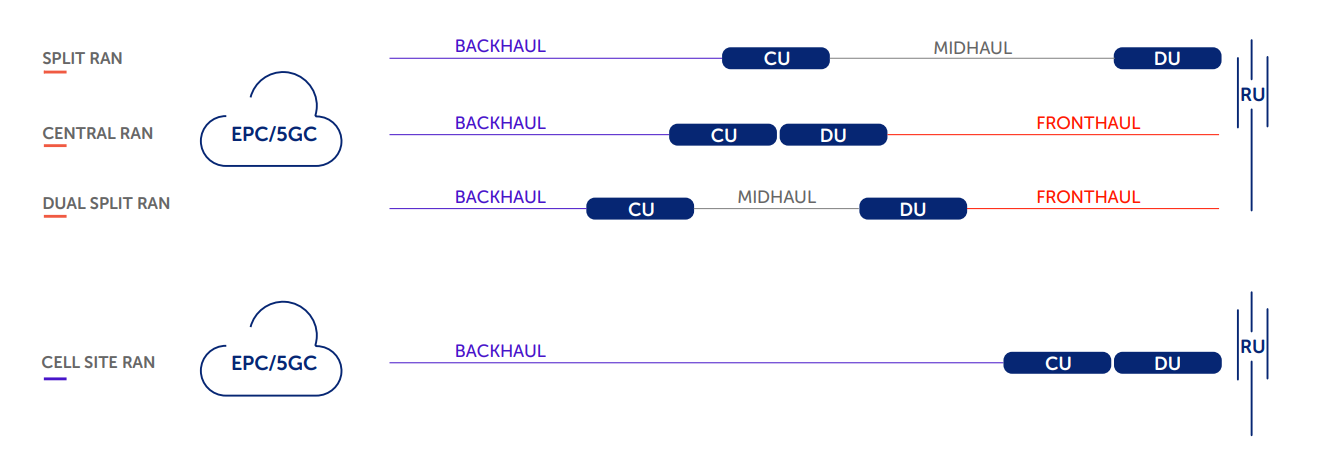
One of the main challenges of successful 5G deployments is network densification. This challenge derives from the need for additional Capacity everywhere and from the use of higher frequency bands in the radio access network (RAN). There are two main approaches to densifying the RAN – Centralized RAN and Decentralized RAN. The decentralized approach follows the […]

In previous cellular technologies (LTE, LTE-M, NB-IoT), cell-specific synchronization and reference signals were used. Always-on reference signals were spread over the entire spectrum for precise channel estimation. 5G NR is a completely new approach regarding cell-specific signals. 5G NR only broadcasts a minimum amount of cell-specific signals with a known sequence that can be measured […]

To understand how 5G achieves the higher data rates, we need to dig into Shannon’s Law to see how engineers have tackled each of the limiting factors from previous generations. Shannon’s Law This is a simplified version of Shannon’s Law: Image Source: Waveform.com 5G improves data rates by attacking the first two components of Shannon’s […]

7IN7 is a Weekly Telecom News Program on YouTube to cover on weekly basis the most important 7 news in 7 days Week 1 Saturday 24-10-2020 till Friday 30-10-2020 Week 2 Saturday 31-10-2020 till Friday 06-11-2020 Week 3 Saturday 07-11-2020 till Friday 13-11-2020 Week 4 Saturday 14-11-2020 till Friday 20-11-2020 The Episodes will be updated […]
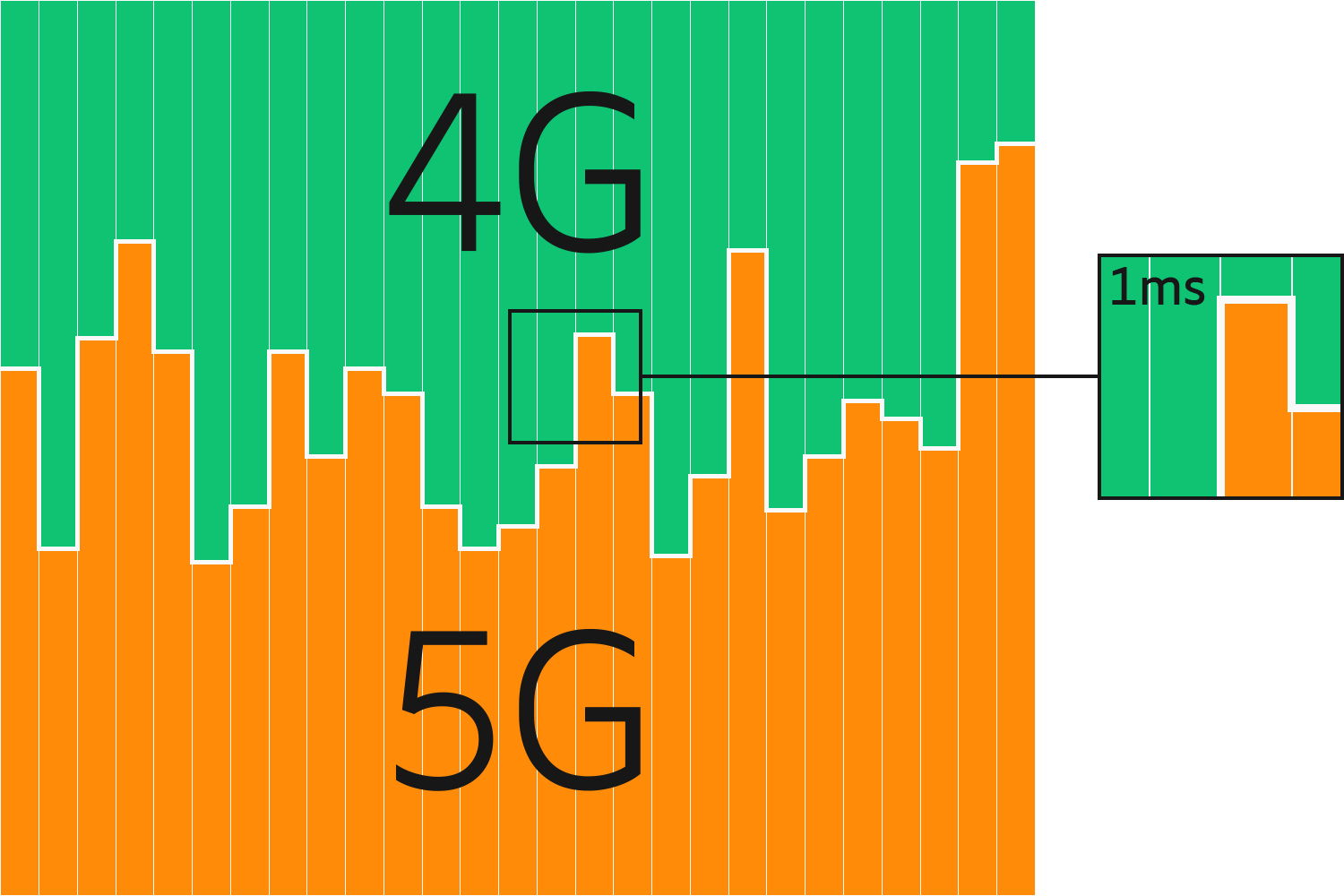
DSS: Dynamic Spectrum Sharing DSS technology has been introduced by the industry to enable 5G services to be delivered in LTE networks to accelerate the availability of 5G services. Traditionally mobile network operators had two main options to deploy new cellular technologies, as follows: Spectrum re-farming, which re-uses the spectrum licensed by mobile operators migrating […]
